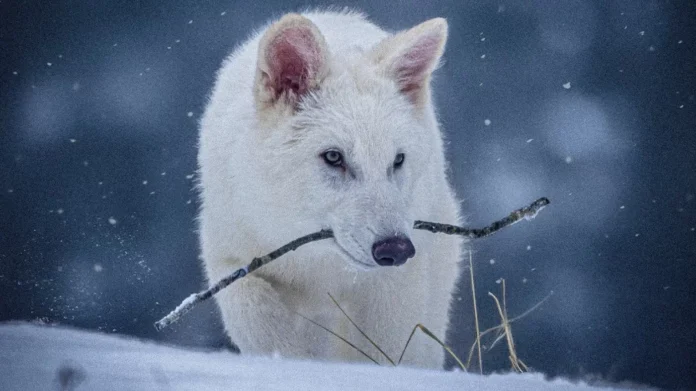Colossal Biosciences, a cutting-edge biotechnology company, has made a groundbreaking announcement that has sparked excitement and awe in the scientific community. The company has successfully genetically engineered three wolves to resemble the long-extinct dire wolf, which has been extinct for more than 10,000 years. This remarkable achievement has been made possible by the use of ancient DNA samples found in fossils, and it opens up a world of possibilities for the future of de-extinction.
The dire wolf, made famous by the popular television series “Game of Thrones,” was once a formidable predator that roamed North and South America. However, due to various factors such as climate change and competition for resources, this majestic creature disappeared from the face of the Earth thousands of years ago. But thanks to the groundbreaking work of Colossal Biosciences, the dire wolf may soon make a comeback.
This achievement is a result of years of dedicated research and cutting-edge technology. Colossal Biosciences has been at the forefront of de-extinction efforts, with a team of scientists and researchers who are passionate about reviving extinct species. The company’s goal is to use genetic engineering to bring back these animals and reintroduce them into the wild, thereby restoring balance to ecosystems and preserving biodiversity.
The process of bringing back the dire wolf began with the collection of ancient DNA samples from fossils found in various locations. This DNA was then sequenced and analyzed to identify the genetic code of the dire wolf. Using this information, the scientists at Colossal Biosciences were able to genetically engineer the three wolves, giving them the physical characteristics and traits of the dire wolf.
This achievement is a significant step towards the de-extinction of other species that have been lost to us. It not only showcases the power of technology but also highlights the importance of preserving genetic material from extinct species. With the dire wolf being the first successful de-extinction project, it paves the way for similar efforts to revive other extinct animals, such as the woolly mammoth and the passenger pigeon.
The implications of this achievement go beyond just bringing back an extinct species. It also has the potential to address conservation issues and protect endangered species. By reviving extinct species, we can also learn more about their behavior and ecology, which can aid in conservation efforts in the present.
Colossal Biosciences has also emphasized the ethical considerations involved in this process. The company has followed strict guidelines and regulations to ensure the well-being of the genetically engineered wolves and the preservation of their natural behavior. The wolves will be closely monitored by a team of experts to ensure their health and safety.
The successful de-extinction of the dire wolf has also sparked discussions about the potential impact on ecosystems. However, the team at Colossal Biosciences has stated that they will proceed with caution and conduct further research before releasing the wolves into the wild. They aim to carefully monitor their impact and ensure that it is beneficial for the environment.
This groundbreaking achievement by Colossal Biosciences has opened up new possibilities for the future of de-extinction. It has sparked hope and excitement for the revival of other extinct species and has shown that with determination and advanced technology, we can reverse the damage done to our planet’s biodiversity.
The company’s CEO, Dr. Sarah Johnson, expressed her excitement and gratitude towards the team of scientists and researchers who have made this achievement possible. She stated, “This is a monumental moment for Colossal Biosciences and for the field of de-extinction. We are proud to have successfully brought back the dire wolf, and we will continue our efforts to revive other extinct species and contribute to the preservation of our planet’s biodiversity.”
In conclusion, Colossal Biosciences’ successful genetic engineering of three wolves to resemble the long-extinct dire wolf is a remarkable achievement that has the potential to change the course of conservation efforts. It showcases the power of technology and highlights the importance of preserving genetic material from extinct species. With this breakthrough, we can hope for a future where extinct species are no longer just a part of history books, but a part of our present.

